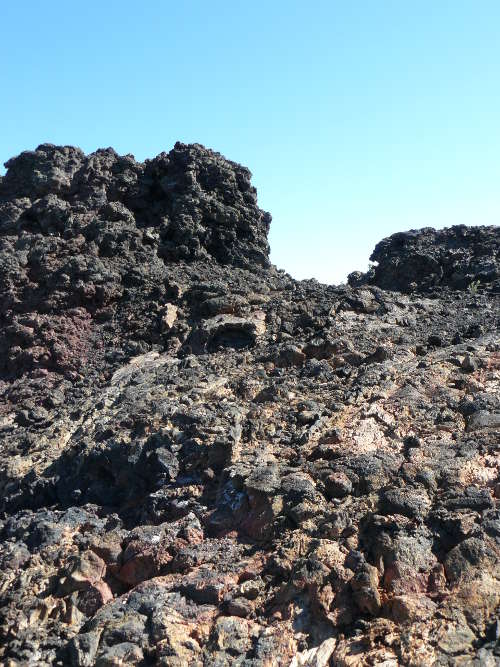 Location Taken: Craters of the Moon National Monument, Idaho
Location Taken: Craters of the Moon National Monument, Idaho
Time Taken: June 2010
Sometimes I run across one of my photos that says a whole lot only if you have a clue what it’s saying in the first place.
For instance, what does this look like to you? A somewhat odd pile of rocks? Yeah, probably.
Me, I look at this and see lava spurting out of the top, liquid rock spattering out in globs to build up a ten-foot tall cone of chaotic rocks, the lava not even having a chance to really cool before it hits the ground.
These spatter cones are actually fairly rare, even discounting how rare lava features are in the first place. It requires a very specific composition of lava, very fluid so it can move easily and full of gas bubbles to provide the popping effect that sends the liquid lava flying. And only certain rocks can melt into that pattern as well, winnowing the number of possible locations some more.
There’s some on the Big Island in Hawaii, in the area near the Kilauea volcano inside Hawaii Volcanoes National Park, and there’s some at this one spot in the Craters of the Moon, and there’s some in Lava Beds National Monument. And probably a multitude of other places around the world, all in areas full of low-laying lava fields and cinder cones not even a hundred feet high, not at all your typical volcanic mountain.
You see, the type of rock that makes spatter cones? It’s terrible for building up a large volcano. It oozes out of the ground too easily, and spreads out rather than builds up. Not that you can’t find large volcanoes near spatter cones, mind you. In fact, all three of those places I mentioned have nearby large volcanoes, for varying definitions of nearby. Lava Beds is only forty miles from Mt. Shasta, one of the southern volcanoes in the Cascade chain. The Big Island is actually a giant volcanic cone, built up from the lava pouring out of Kilauea and the other volcanic peaks that form it. And Craters of the Moon, well, it’s only about 150 or so miles from the mother of all volcanoes, Yellowstone!
And if 150 miles seems far to you, just remember that the lava coming out at Craters of the Moon is an offshoot of the Yellowstone magma, following old cracks from when this spot WAS the Yellowstone Volcano, before the volcanic hotspot moved further to the east. Or, to be technically correct, the continent moved 150 miles to the west over the top of the hotspot.
…I love the oddities of geologic time scales…
